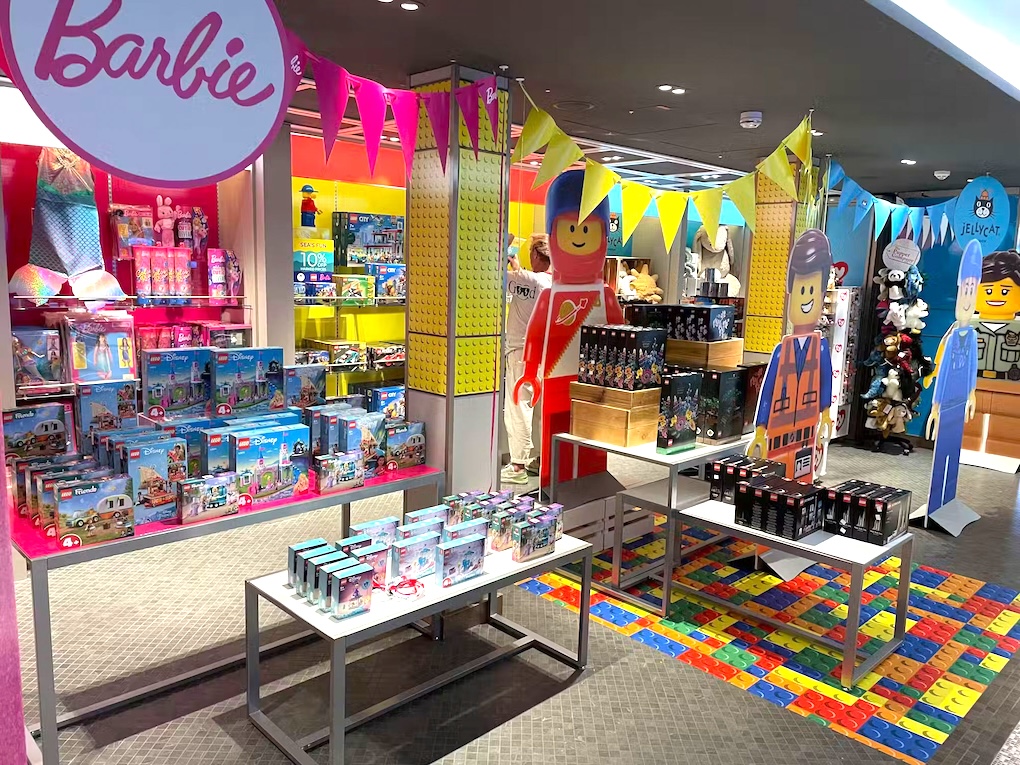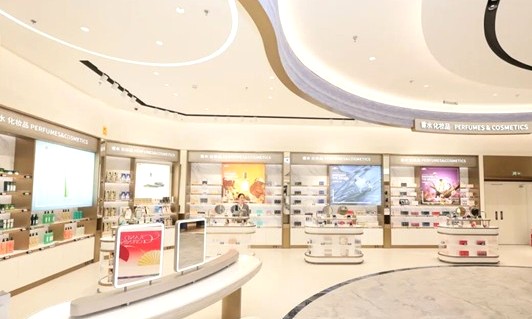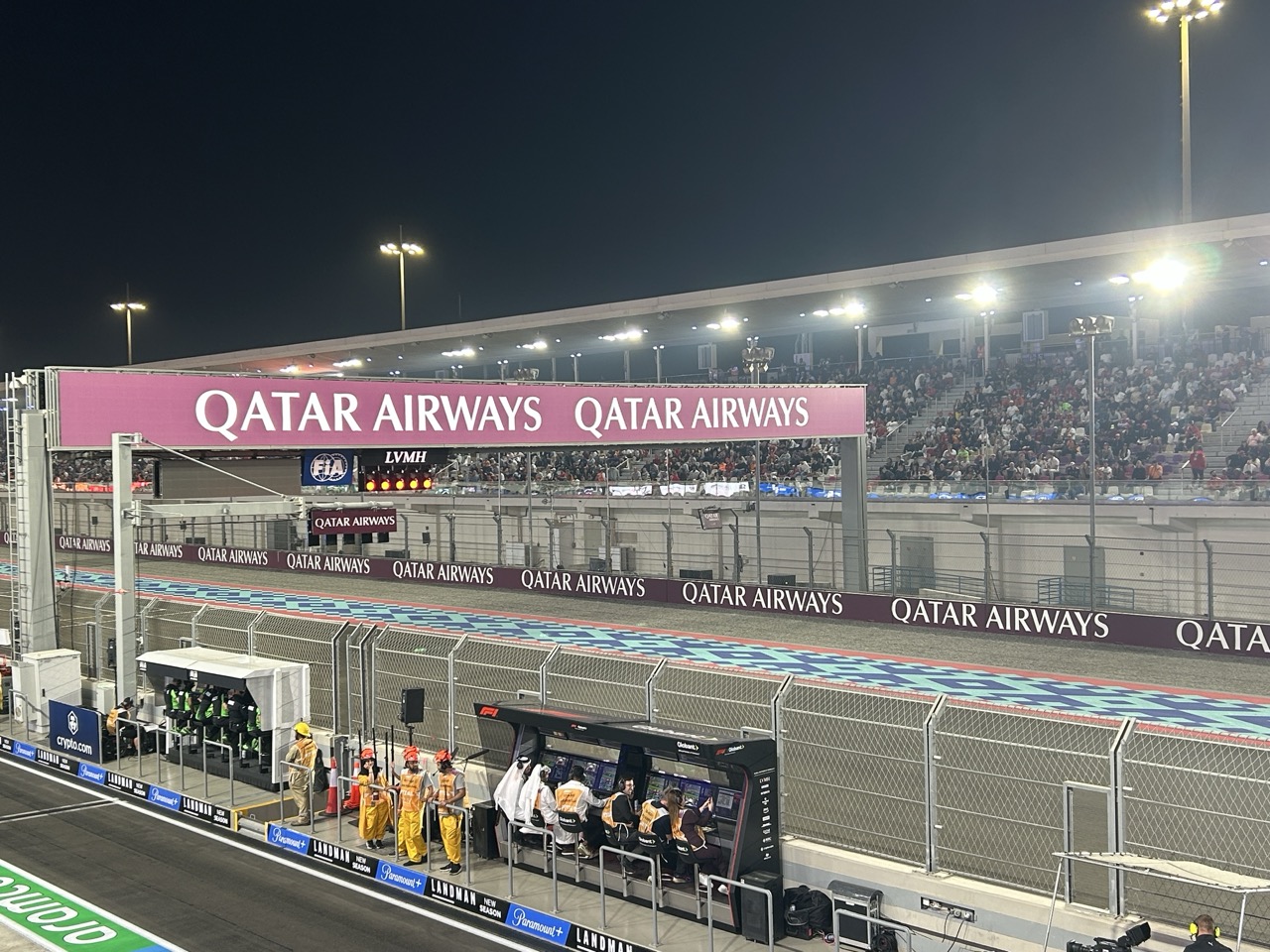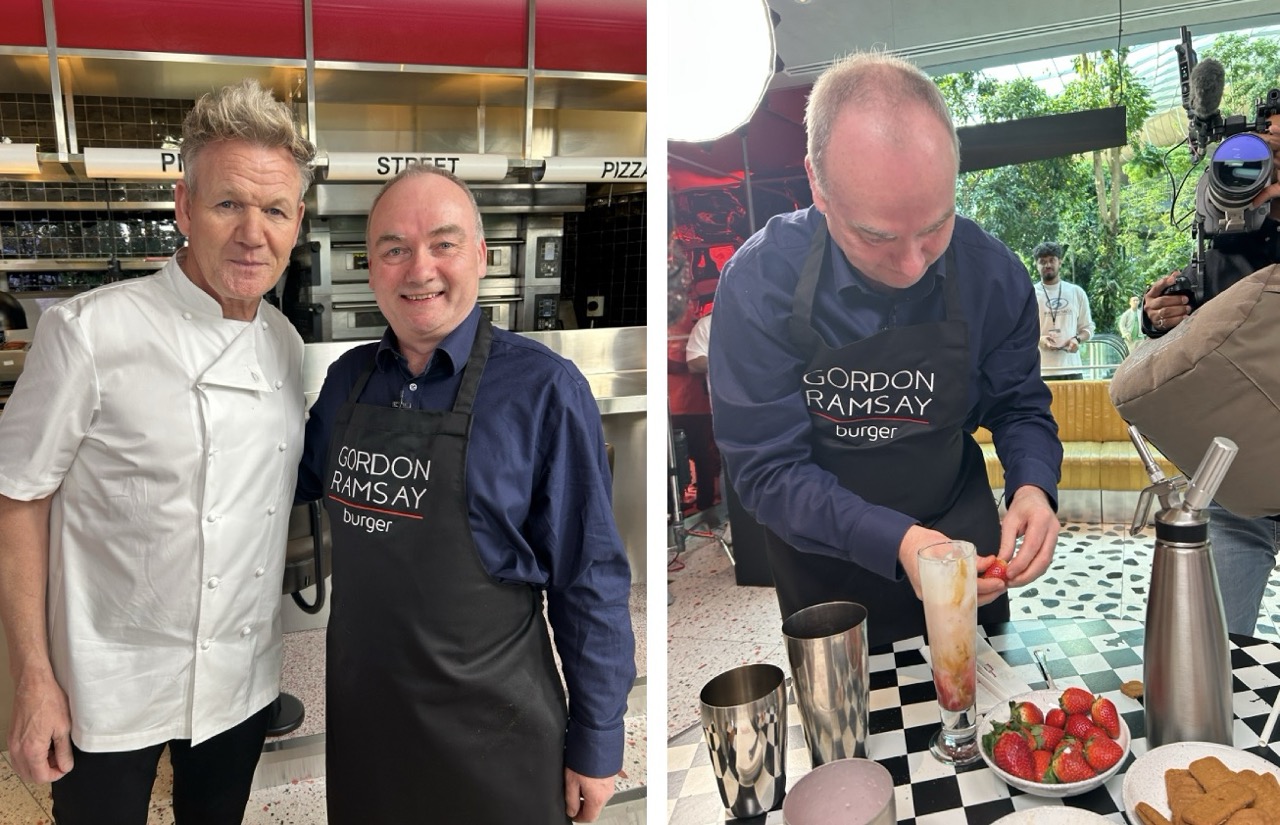In this contributed column dedicated to the cruise sector, leading retailer Harding+ highlights the growth of the multigenerational-family audience and first-time cruisers.
If you think you have the cruise demographic nailed in your mind as the classic empty nester or baby boomer, you need to take a closer look.
Perhaps at the CLIA data that shows that more than a third are under 40. That the average cruise guest age is just 46. And that 73% of trips involve families of at least two generations, with more than a quarter multigenerational and involving anything up to five different generations.
And it’s the ‘family’ word that clearly stands out, and the ‘family’ word that needs to be increasingly considered from a retail perspective.
Since the pandemic-led cruise shutdown, the industry has grown rapidly, surpassing 2019 levels last year in terms of appeal, occupancy levels and growth. All forecasting projections suggest that 2024 will be even stronger, success exemplified by the scale and impact seen in the launches of Sun Princess and Queen Anne this year.
Part of this growth is down to increased global itineraries and the ships and styles that serve them. Part is down to the rise in first-time cruisers, who are embracing the global exploration potential they don’t want to miss out on. And the family dynamic is the bridge between the two, which bodes well for continued future growth.
From a retail perspective, this changes the rules of engagement, and the levels of guest listening and research we invest in at Harding+ is fundamental to keeping ahead of the curve to match needs and shifting audiences.

Family retailing keys
Harding+ research shows that more than 75% of families plan for ‘shopping’ to form an important part of their trip, compared to only 50% of non-families, and it’s a buying indicator that needs focus to help move guests from a positive browsing world to an active buying one.
And while a quest for education, entertainment and brand experience is part of the DNA of the majority of cruise guests, and a strategic underpin of Harding’s retail approach, one size clearly does not fit all in terms of executing that strategy across UK, US and Australian-based fleets.
Building dwell time for children especially can be a challenge if the focus is not on specifically engaging them. No one wants to hang around stores with unhappy children in tow, and retail is rarely built to cater for the youngest when selling to the parents is the goal.
Cruise is interactive in its very nature, so to compete with the plethora of alternative choices onboard around music, entertainment and fun we need to come from a similar perspective to earn attention and keep the family demographic returning to retail.
From activations to iconography, from character engagement to specific promotions, and all with a focus on brands to showcase that will naturally draw in cross-family appeal.
And while approaches are creatively individual, strategically the Harding+ understanding of destination-themed retail, of cross-ship visibility and signposting, and of time of day/stage of trip activations never waver at the core.
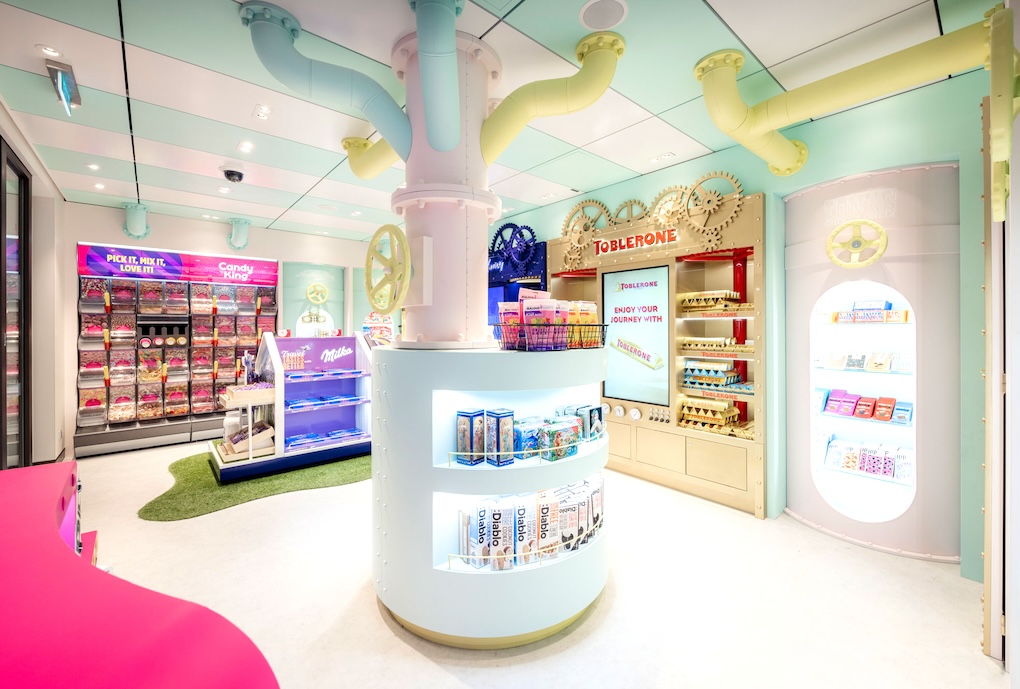
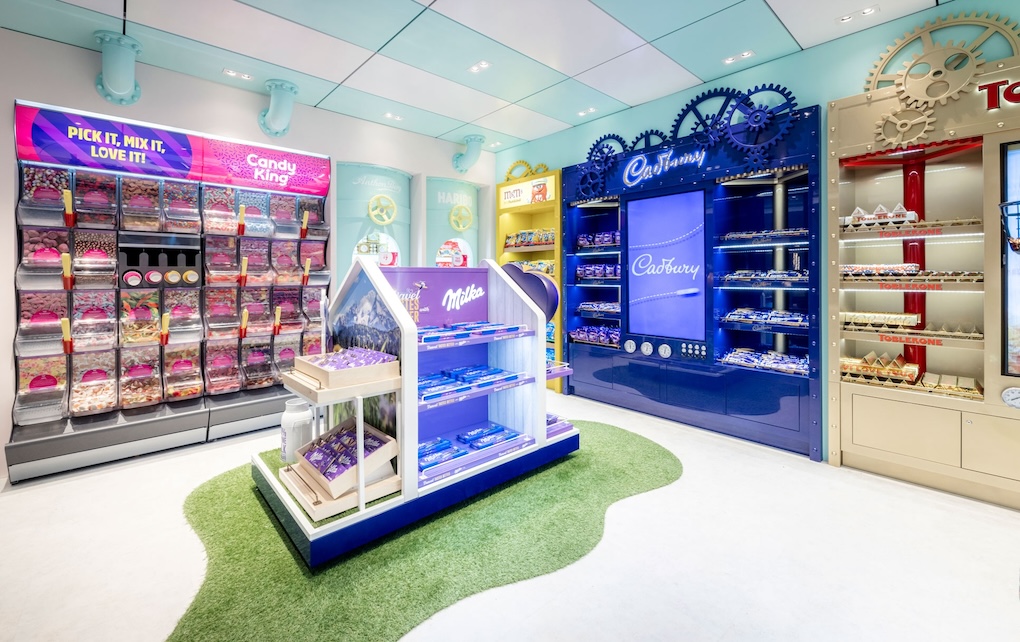
Summer brought to life
School holidays naturally bring families to the fore for the big summer trip, and live examples of family-first thinking need to consider ‘right-now’ relevance, a strong summery look and feel, and smart pricing for the budget conscious.
Harding+ colour palettes are dialling up bright and warm greens, yellows and pinks, peppered with summer icon imagery and playful typography and designed to work across every element and fascia within the retail and marketing mix for our cruise line partners.
The ‘retail entertainment’ thinking, fuelled by guest listening, takes learnings from the heavily evidenced value we know is returned from onboard brand ambassadors, the opportunity to explore a brand’s back stories, and the education value of workshopping hands on with products and expert teams. But here with a family skew.
A fragrance masterclass for children in the beauty shop space reveals the science, creativity and ingredients used to make some of the world’s best-known fragrances. Expert led, with tangible ingredients, samples and lab coats for participants to wear.
Pink Parties for Pandora and Swarovski, focusing on charms, pink diamonds and rubies, and fuelled by pink prosecco and pink lemonade for the family dynamic bring the VIP mindset.
A timeless Lego masterclass; colouring competitions; treasure hunts across the retail estate; story time with a giant plush version of ‘Odelle the fearless Octopus’ on P&O Iona all summer; toy adoption certificates for TY plush toys with every purchase.
The headline attention may be on the younger audience members, but every activity draws in the family unit rather than separating it, making retail a shared experience and sales opportunities more accessible – for the children, but also for the parents. More time to browse as the treasure hunts runs through the shops, more opportunities to sample fragrances, more excuses to still play with Lego as a parent… during a ‘Time to learn’ watch mechanism workshop that we created for children and teens onboard one of our US ships, one captive and engaged audience parent found time and space to invest in a Rolex.
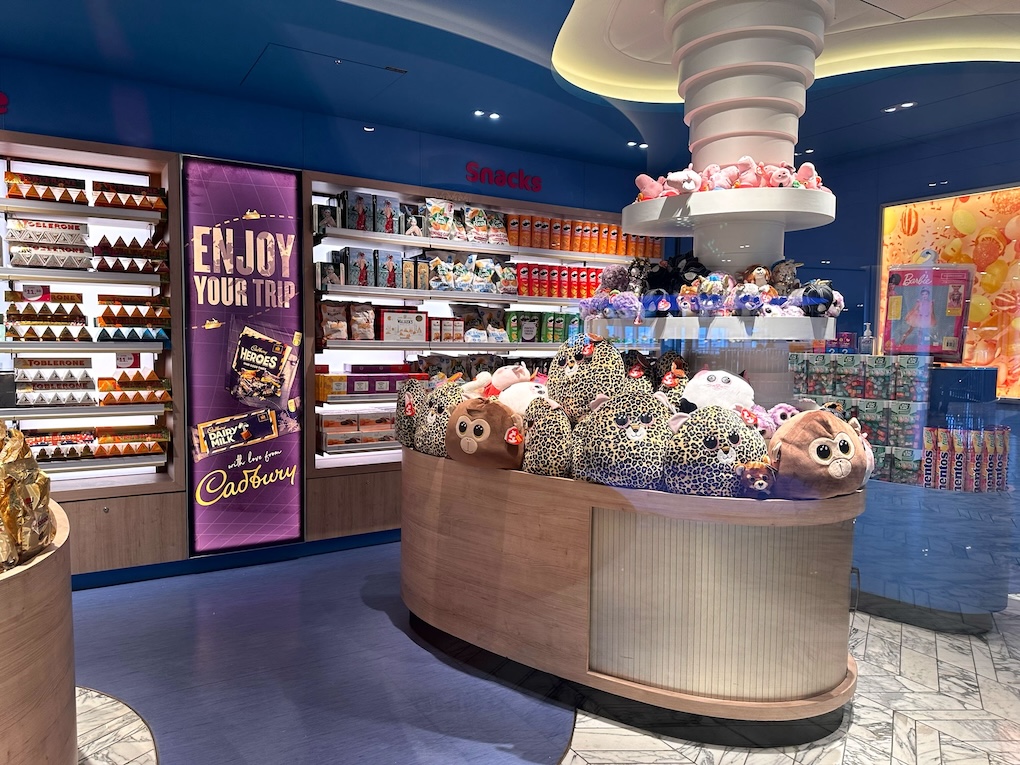

Ownability and shareability
Alongside the industry-growth data and the increasing family demographic reality is a strong indicator that family and friend recommendations are by far the leading decider in getting new passengers onto ships, suggesting that the family appeal of cruising is spreading via word of mouth.
Clearly destinations visited are a key driver of this. But for families, storytelling around shipboard engagement activity, low levels of dull down time, and onboard experiences that engage the children will matter too – all natural questions that friends would ask of those who have been and seen.
Retail is part of this: the constant evolution of live activity and guest-first thinking. Things bought. Fun had. Surprises seen. And for cruise lines, ownability of that family guest experience can matter, which includes bespoke retail and ‘firsts’ in the same way that ‘firsts’ appeal to guests of all backgrounds.
As part of this, an additional Harding+ approach this summer sees the introduction of character outfits, and specifically character bears, into the mix as ship mascots. Full-sized characters with actors inside the costumes, which are specific to each ship. This provides a photo opportunity, a magnet for family attention, small versions for guests to buy – a signpost opportunity for the wider retail space as part of the cross-ship ‘breadcrumb-trail’ model of landing retail cues and temptations naturally in the guest path.
And if your holiday photo reel incudes ‘retail’ in the mix through this, then ownability, recall and shareability is being delivered for the longer term.
While tailored in its approach, the family strategy doesn’t ever supersede business as usual, where activations and focus on brands for the non-family cruise guest continue in parallel.
This is the most diverse guest profile model the industry has seen, demanding a more sophisticated and flexible retail experience.
But that also means opportunities to win and engage are richer, as long as the insights that drive that thinking are borne from research and rigour and collaborative partner thinking to ‘make every cruise better’. 🛳️
*This feature first appeared in The Moodie Davitt eZine. Click here for access.
